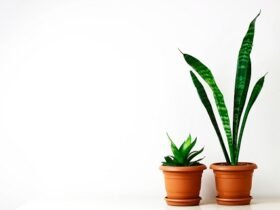ZZ plants (Zamioculcas zamiifolia) have become immensely popular as indoor plants due to their attractive foliage, low maintenance requirements, and ability to thrive in various light conditions. This comprehensive guide explores different varieties of ZZ plants, highlighting their unique characteristics, growth habits, care needs, and considerations for choosing the right variety for your indoor space.
Zamioculcas zamiifolia (Standard ZZ Plant)
- Description: The standard ZZ plant is characterized by its glossy, dark green, pinnate leaves that grow on upright stems. It is known for its resilience and ability to tolerate neglect and low light conditions.
- Growth Habit: Forms upright stems with glossy, oval leaflets arranged along each stem. Can reach a height of 2-3 feet indoors, creating a lush, tropical appearance.
- Care Requirements:
- Light: Thrives in low to moderate indirect light conditions. Can tolerate low light but grows best with bright, indirect light.
- Watering: Allow the soil to dry out between waterings. ZZ plants are drought-tolerant and prefer slightly dry conditions over being waterlogged.
- Temperature: Prefers average room temperatures between 65-75°F (18-24°C). Avoid cold drafts and sudden temperature fluctuations.
- Soil: Well-draining potting mix suitable for indoor plants.
- Fertilization: Feed with a balanced, diluted fertilizer once a month during the growing season.
- Suitability: Ideal for beginners and those looking for a low-maintenance indoor plant that can adapt to different light conditions and neglect.
Zamioculcas zamiifolia ‘Raven’ (Black ZZ Plant)
- Description: ‘Raven’ is a cultivar of ZZ plant known for its striking dark purplish-black leaves. It retains the same resilience and low maintenance as the standard ZZ plant but with a unique aesthetic appeal.
- Growth Habit: Similar to the standard ZZ plant but with dark, almost black, foliage that adds a dramatic flair to indoor spaces. ‘Raven’ can grow up to 2-3 feet tall.
- Care Requirements:
- Light: Similar to the standard ZZ plant, ‘Raven’ prefers moderate to bright indirect light but can tolerate lower light conditions.
- Watering: Follow the same watering practices as the standard ZZ plant, allowing the soil to dry out between waterings.
- Temperature and Soil: Requirements are identical to the standard ZZ plant.
- Suitability: ‘Raven’ is perfect for adding contrast and a modern touch to indoor decor, particularly in spaces where the dark foliage can stand out against lighter backgrounds.
Zamioculcas zamiifolia ‘Zenzi’
- Description: ‘Zenzi’ is a dwarf variety of ZZ plant, known for its compact size and smaller, more rounded leaflets compared to the standard ZZ plant.
- Growth Habit: Forms compact clumps of foliage with shorter stems and smaller leaflets than the standard ZZ plant. Typically grows up to 1-2 feet tall, making it suitable for smaller spaces.
- Care Requirements:
- Light: ‘Zenzi’ prefers moderate indirect light but can adapt to lower light conditions.
- Watering and Soil: Follow the same watering and soil requirements as the standard ZZ plant.
- Temperature: Requires the same temperature range as other ZZ plant varieties.
- Suitability: Ideal for small spaces, tabletops, or areas where a smaller, more compact plant is desired. ‘Zenzi’ retains all the resilience and low maintenance characteristics of the standard ZZ plant in a more petite form.
Comparison of Growth Habits and Care Needs
- Growth Rate: Standard ZZ plants tend to grow taller and more upright compared to ‘Zenzi’, which stays compact and bushy.
- Light Requirements: All varieties prefer moderate to bright indirect light but can tolerate low light conditions. ‘Raven’ may need slightly more light to maintain its dark foliage.
- Watering: All ZZ plant varieties are drought-tolerant and prefer dry soil between waterings. Overwatering is a common issue that can lead to root rot.
- Temperature: ZZ plants prefer average room temperatures and are sensitive to cold drafts and extreme temperature fluctuations.
- Fertilization: Feed all varieties with a balanced, diluted fertilizer during the growing season to support healthy growth, but avoid over-fertilizing.
Understanding these differences can help you choose the right ZZ plant variety based on your space, lighting conditions, and aesthetic preferences.
Choosing the Right Variety for Your Space
When selecting a ZZ plant variety, consider the following factors:
- Space: Determine the available space in your home or office. Standard ZZ plants are taller and more upright, while ‘Zenzi’ is more compact and suitable for smaller areas.
- Lighting: Assess the lighting conditions in the intended location. If your space has bright indirect light, all varieties will thrive. For lower light conditions, choose the standard ZZ plant or ‘Zenzi’.
- Aesthetic Preference: Decide whether you prefer the classic glossy green foliage of the standard ZZ plant, the dramatic dark leaves of ‘Raven’, or the compact form of ‘Zenzi’.
- Maintenance: Consider your schedule and ability to care for plants. ZZ plants are low maintenance overall, but smaller varieties like ‘Zenzi’ may require less frequent pruning and upkeep.
By considering these factors, you can select a ZZ plant variety that not only fits your space and care routine but also enhances your indoor environment with its unique beauty and resilience.
Frequently Asked Questions (FAQs) About ZZ Plant Varieties
ZZ plants are slow-growing and can tolerate being slightly root-bound. Repotting every 1-2 years or when the plant has outgrown its container is generally sufficient.
Yes, ZZ plants are adaptable and can tolerate low humidity levels typical of indoor environments. However, they may benefit from occasional misting or placement near a humidifier, especially during dry winter months.
If your ZZ plant appears droopy or wilted, it may be a sign of underwatering. Check the soil moisture and water thoroughly if dry. Trim any yellow or unhealthy leaves and ensure the plant is in an appropriate light and temperature environment.
Overwatering is one of the common issues with ZZ plants, leading to root rot. To prevent overwatering, allow the top inch or two of soil to dry out between waterings. Ensure your pot has drainage holes to allow excess water to escape.
ZZ plants are slow-growing compared to many other houseplants. They may produce new growth throughout the year under optimal conditions but generally do not grow rapidly.
To encourage a compact growth habit, periodically trim back any leggy stems or prune back overly long leaflets. This can promote denser foliage and a more bushy appearance over time.
Conclusion
Exploring the different varieties of ZZ plants allows you to find the perfect fit for your indoor space, whether you’re looking for a tall statement plant or a compact addition to your desk or shelf. With their adaptability and striking foliage, ZZ plants continue to be a favorite among indoor plant enthusiasts for their beauty and ease of care.














